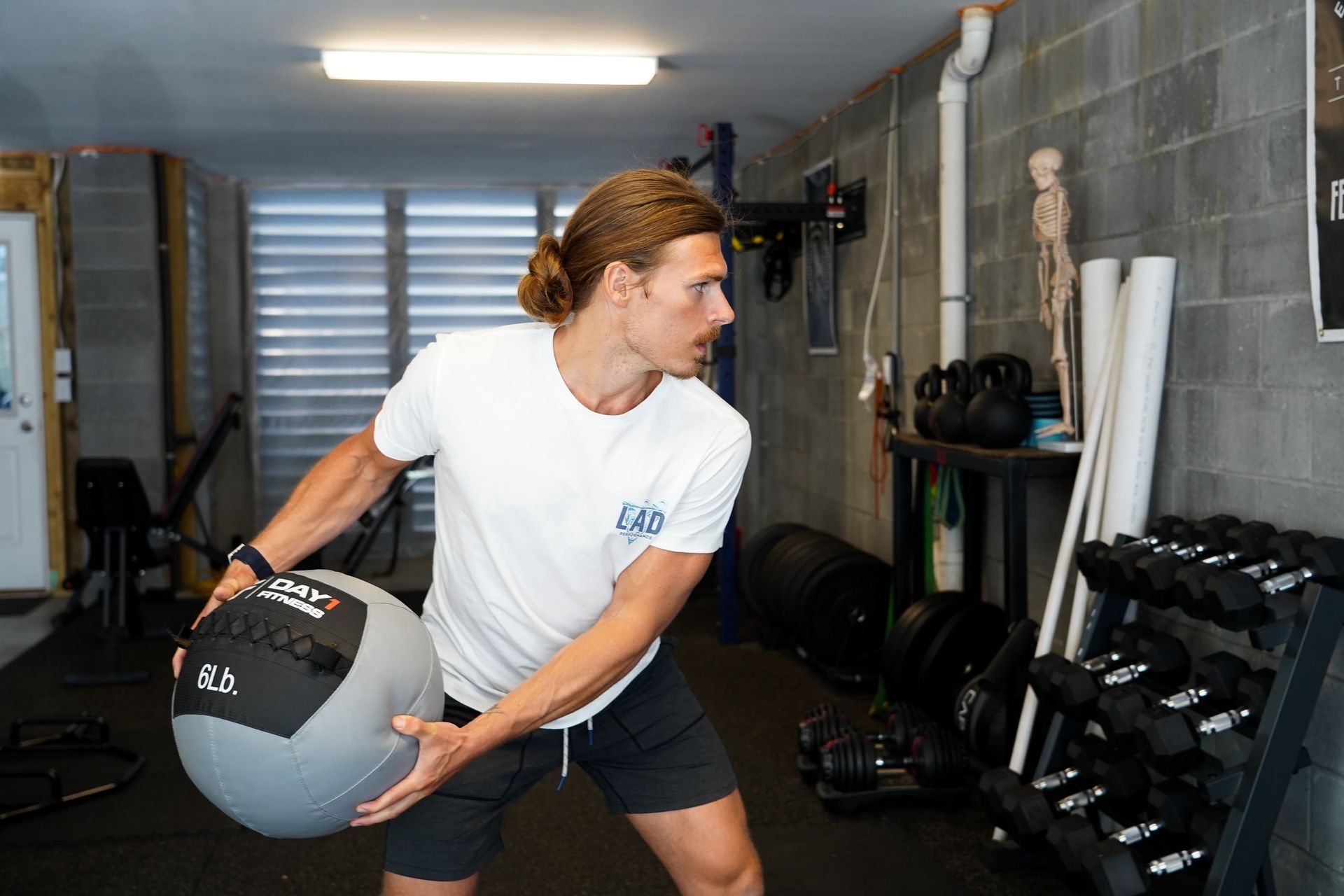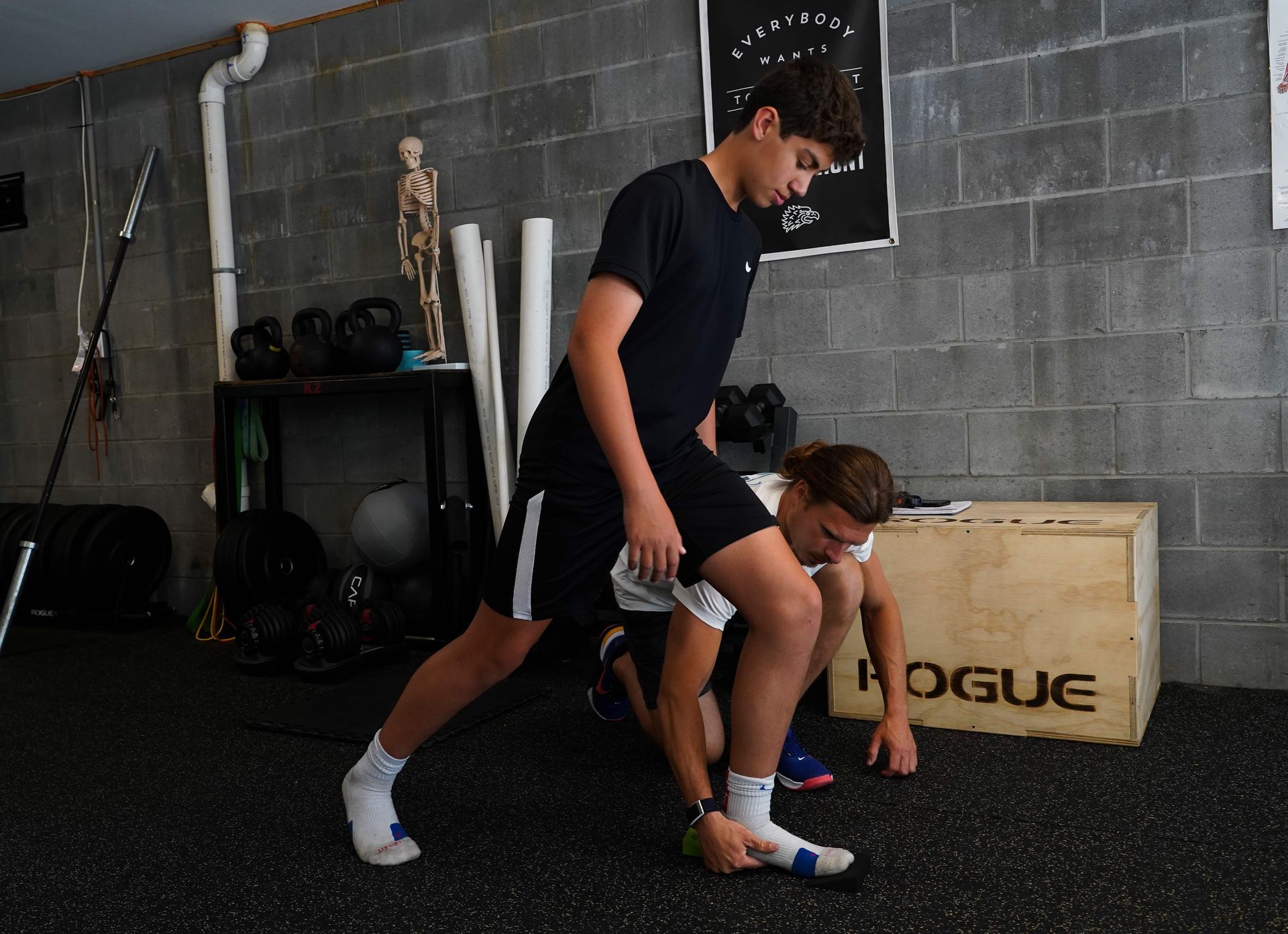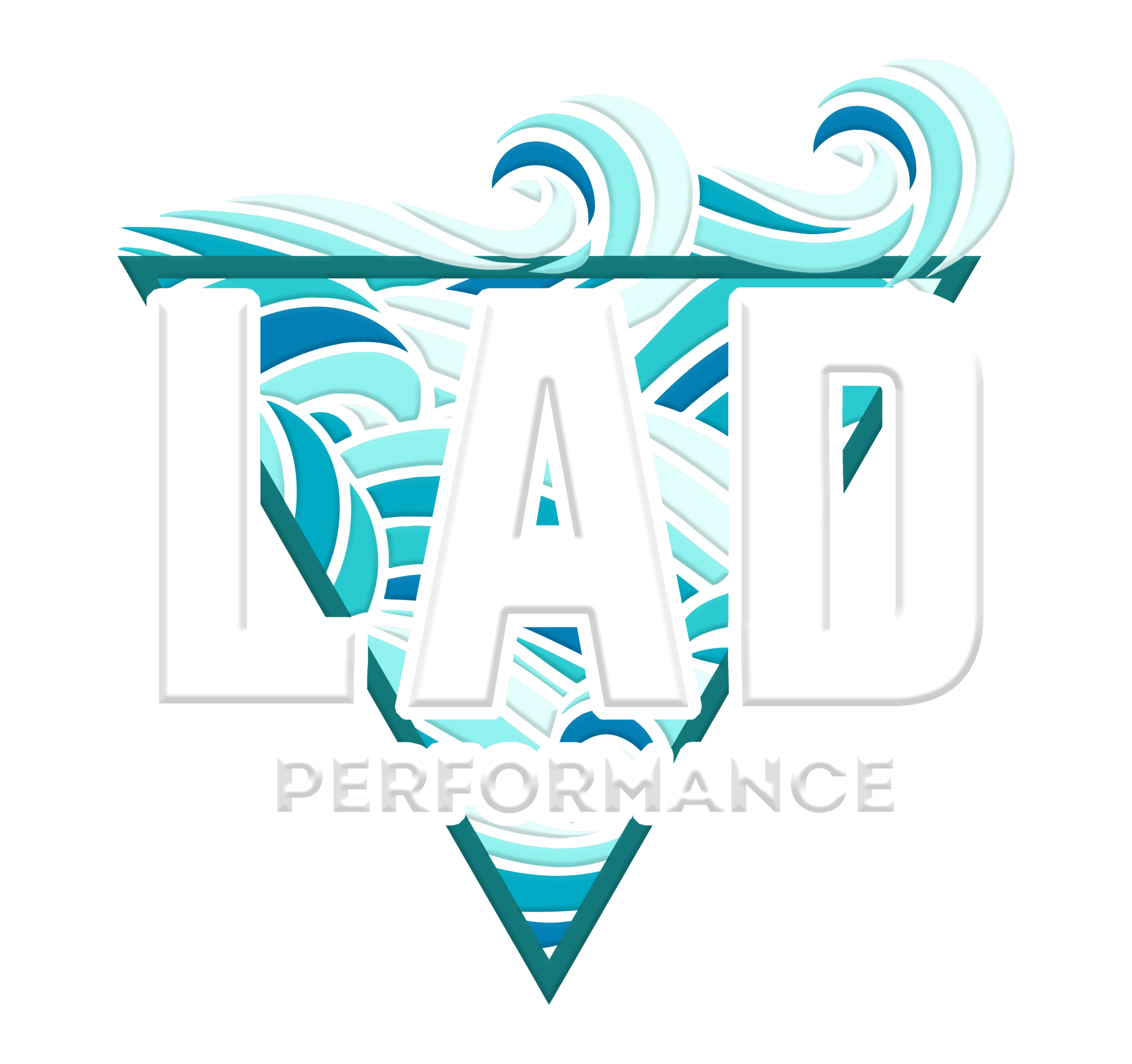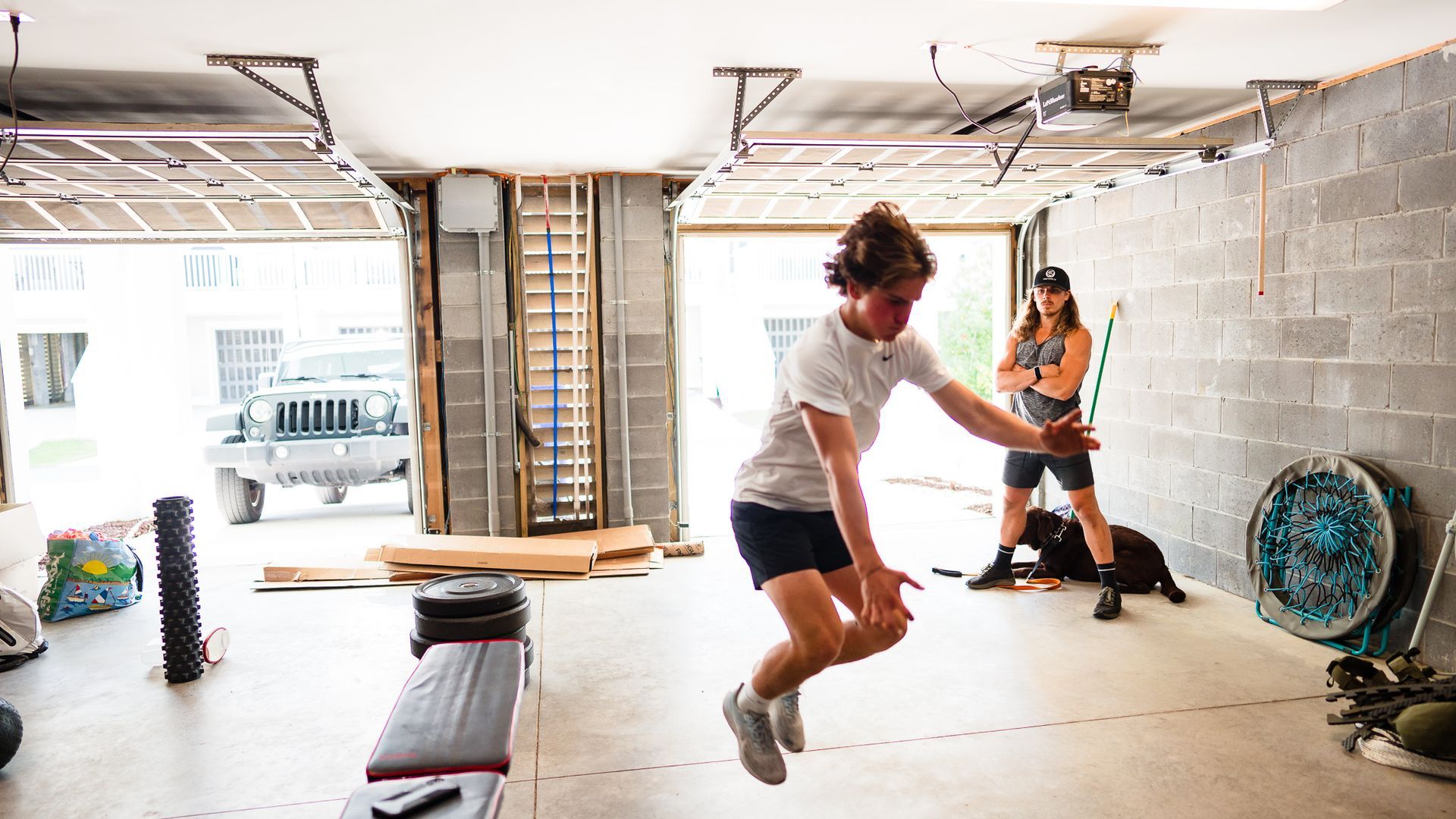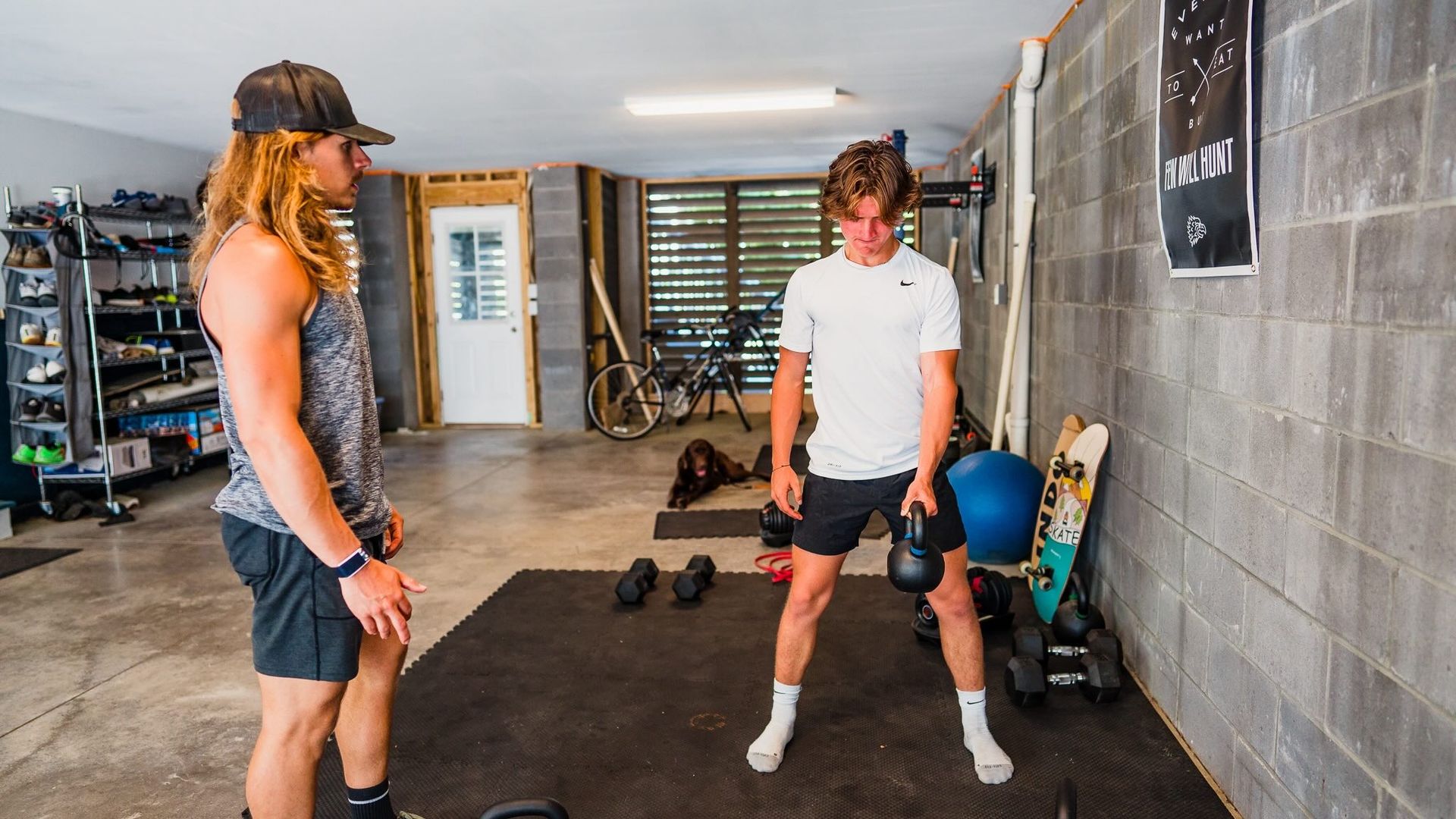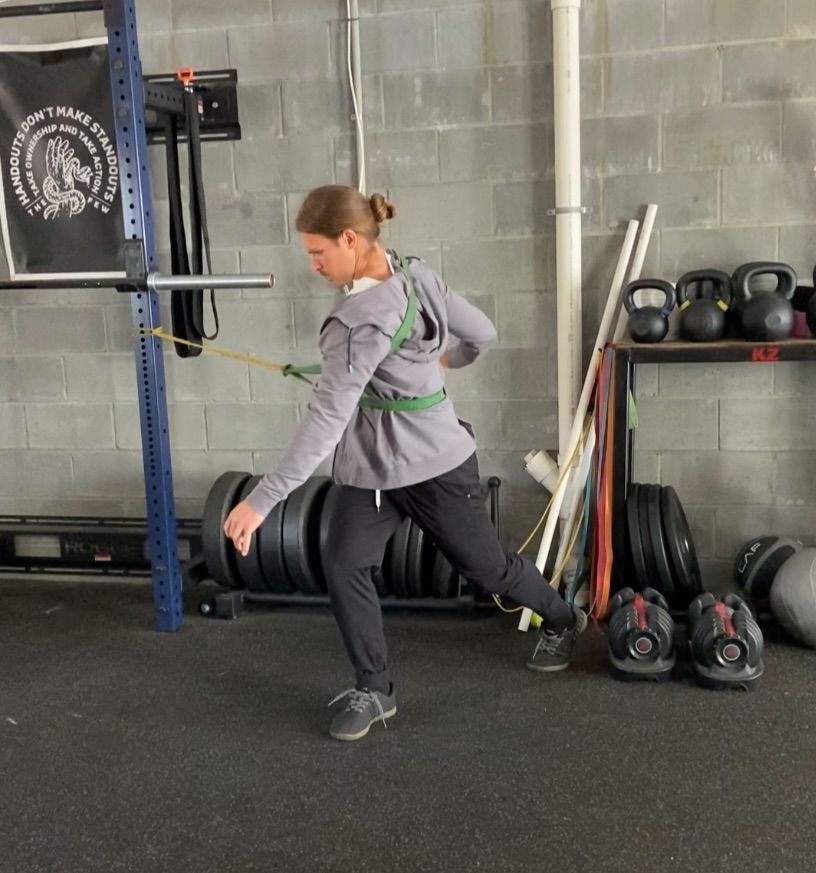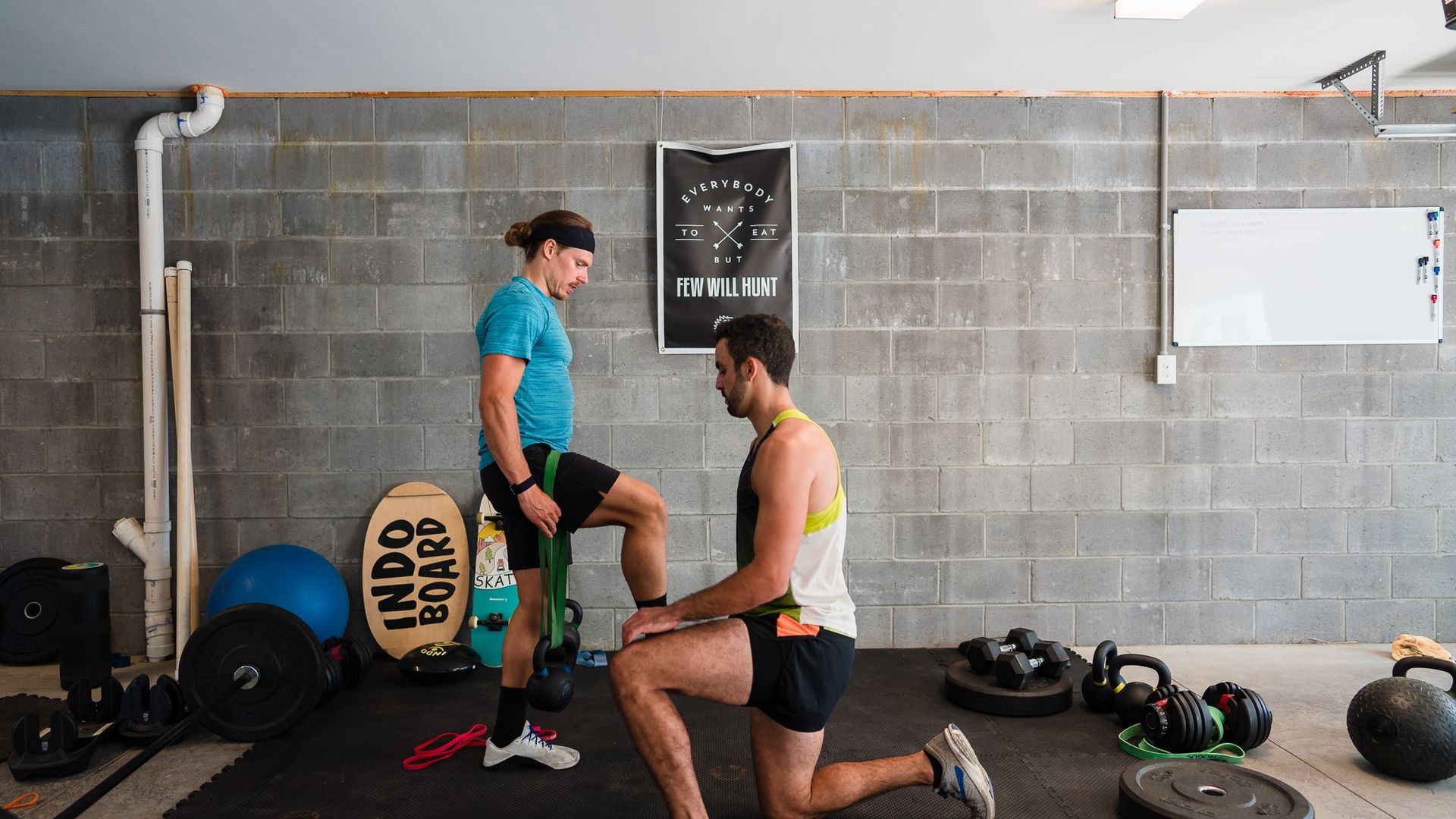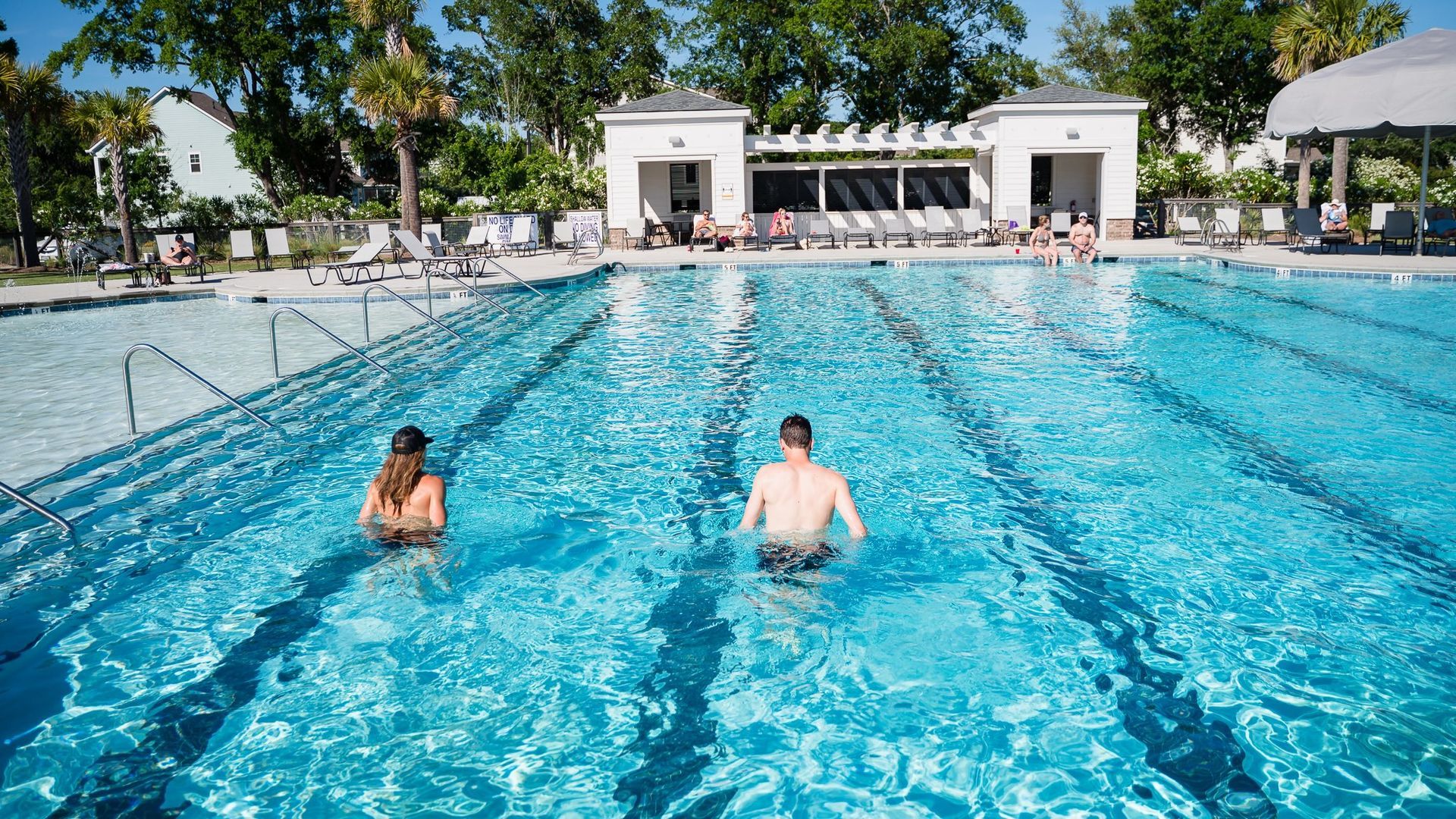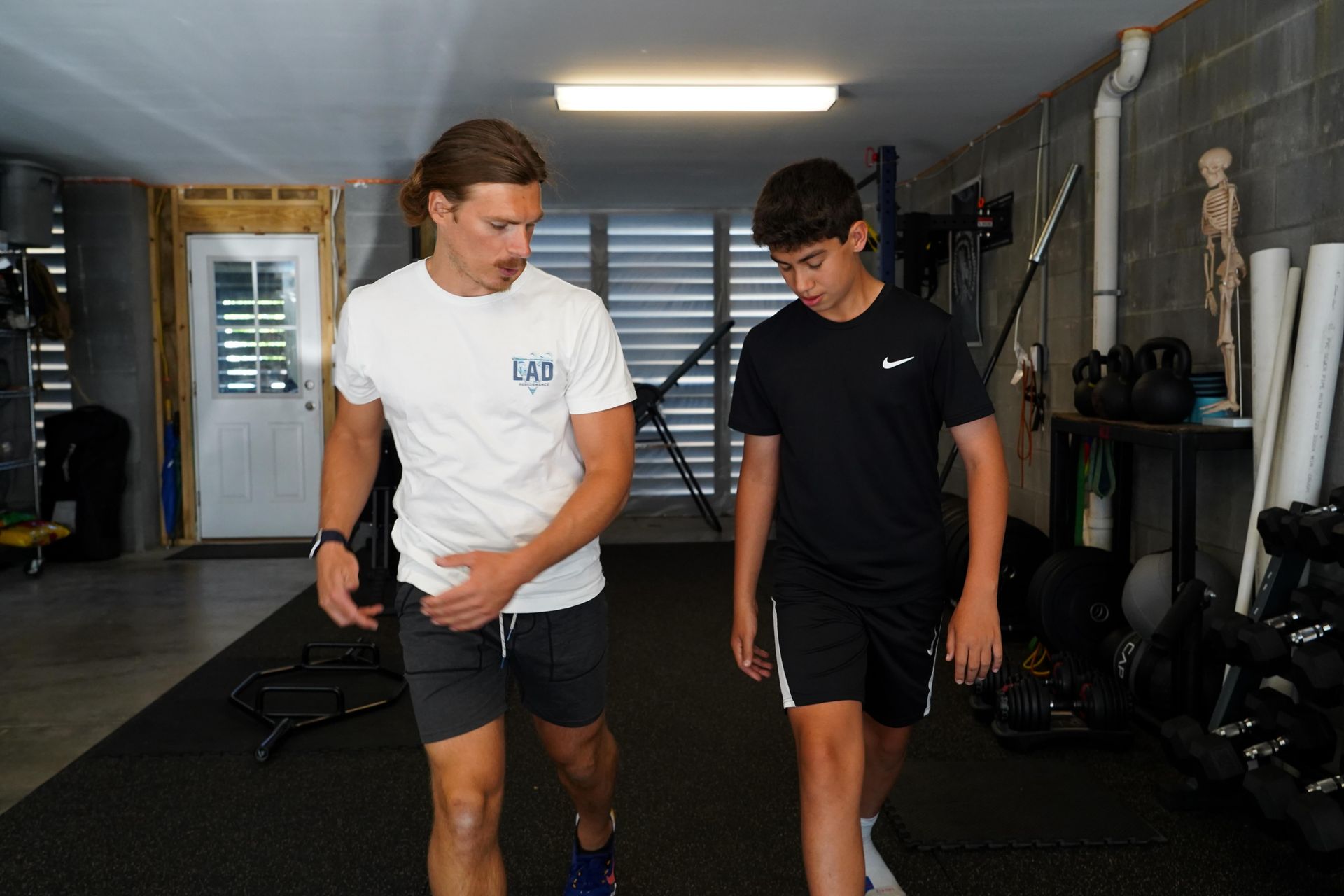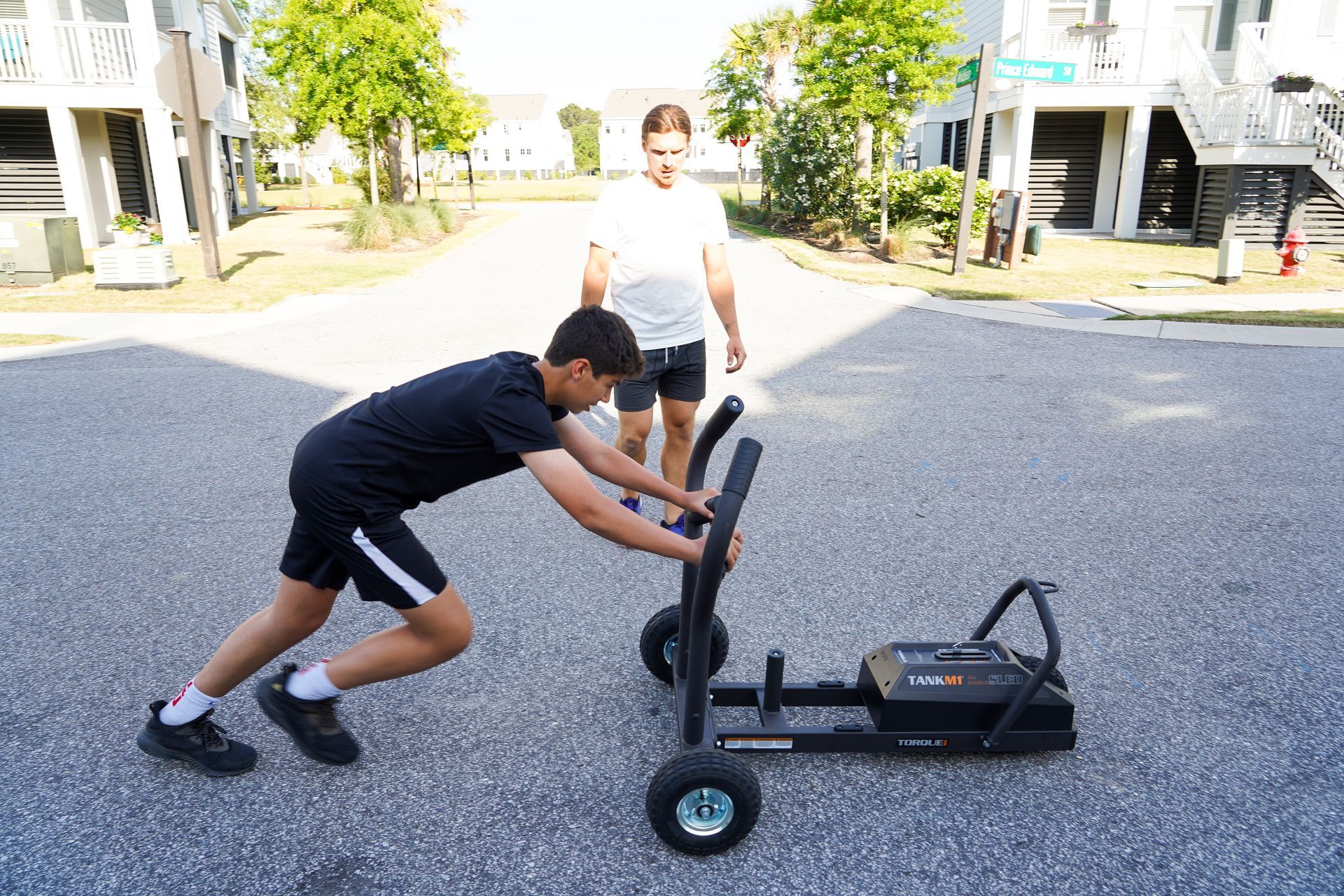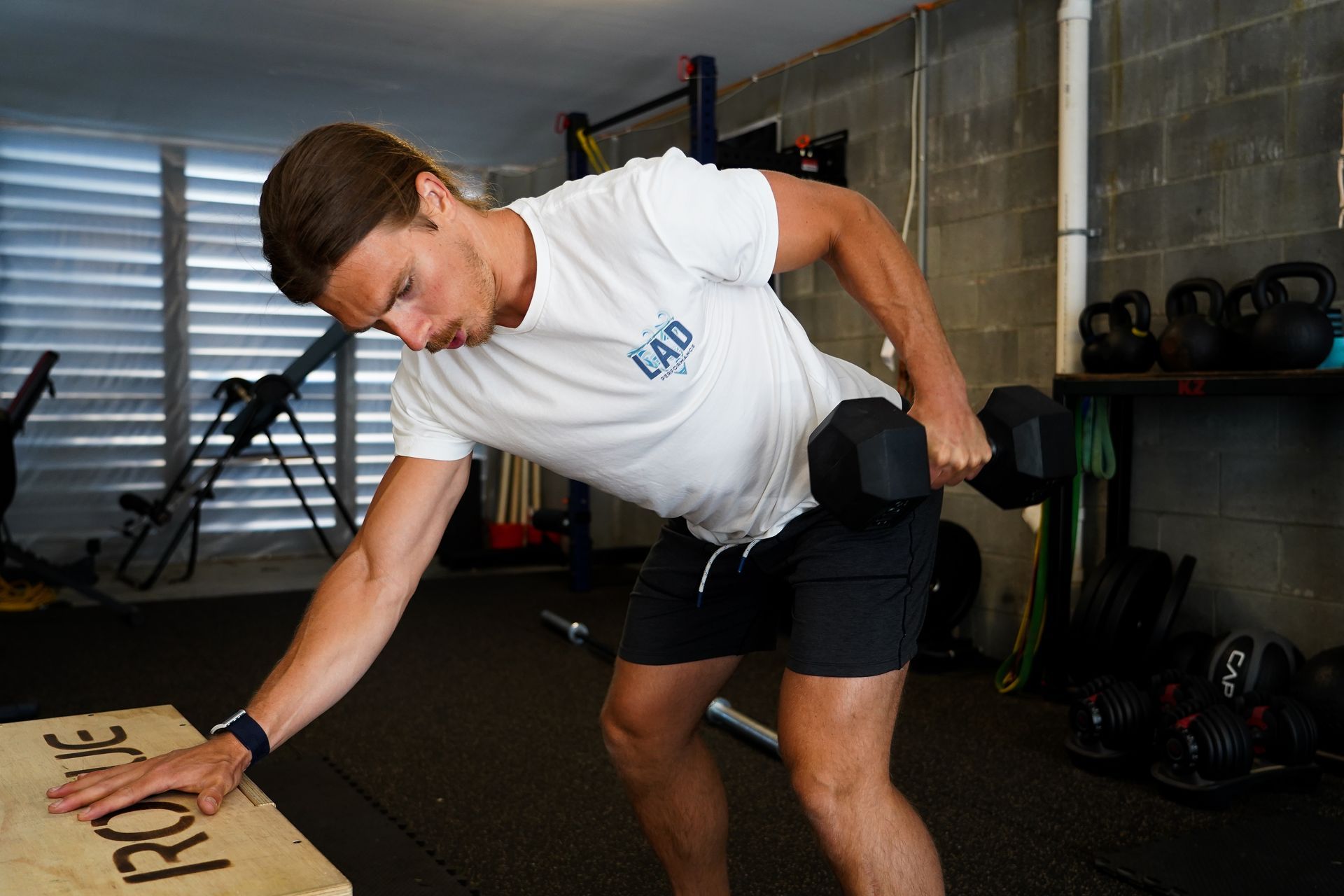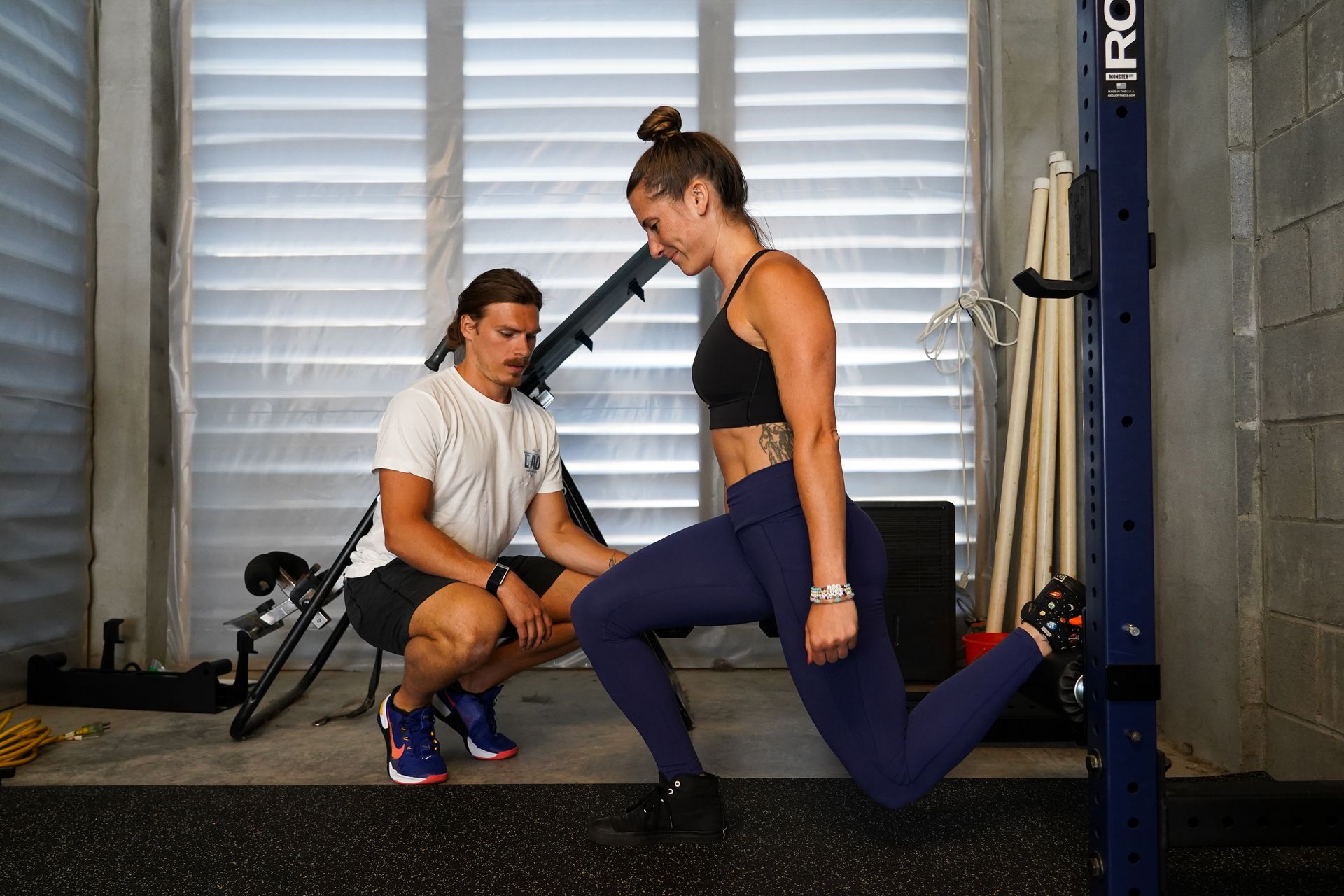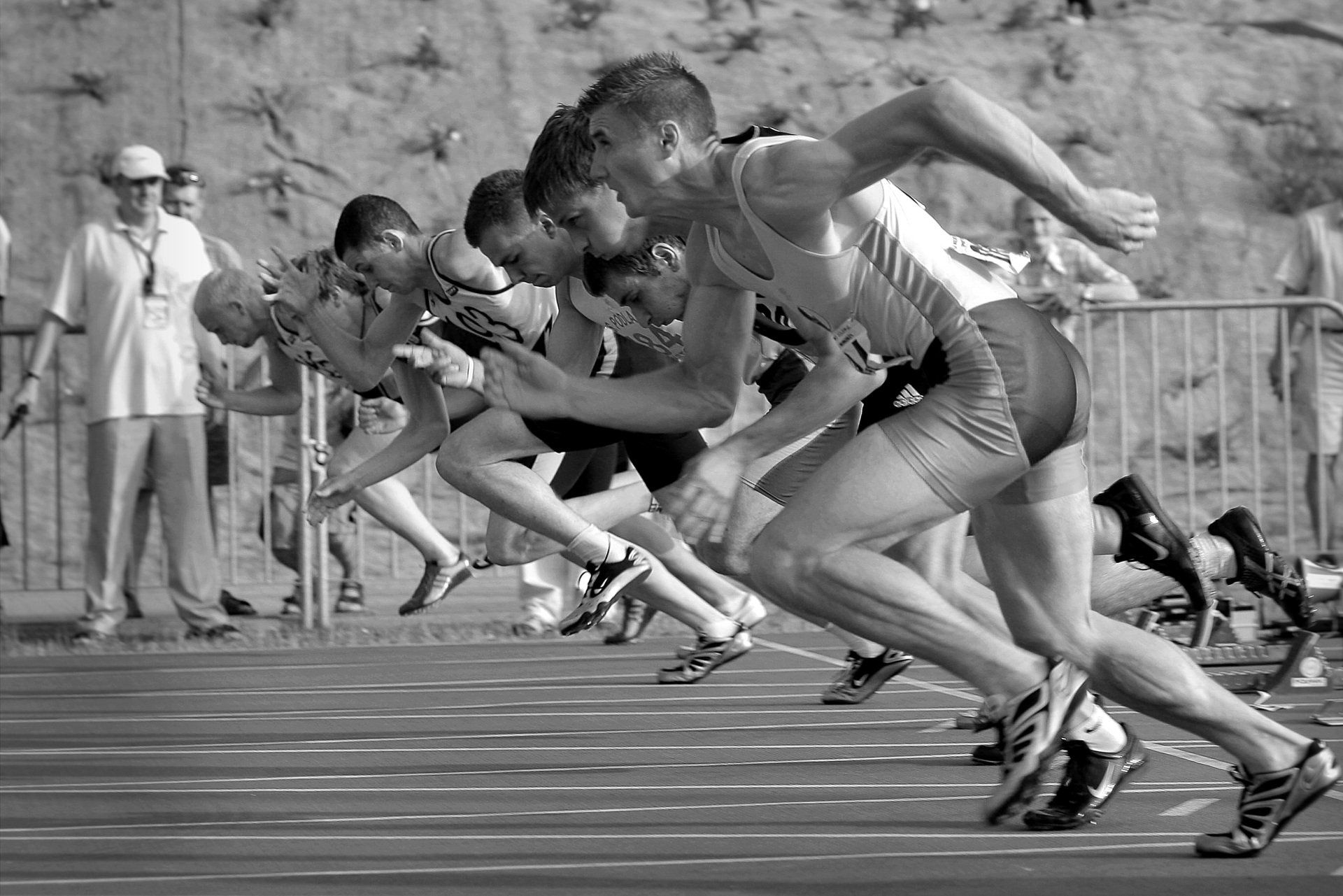LAD Performance- The Weekly Dose
A simple solution to getting stronger
Another Episode of The Weekly Dose!
Every week I set out to help educate you on movement practices and principles that will enable you to become a better athlete. Whether you are a high school athlete or a 75 year old grandparent trying to keep up with your grandkids, this email will have value!
Today I am breaking down a simple way anyone can get stronger regardless of age or ability.
How can I get strong if I don’t have any gym equipment?
What’s something I can do if I don’t have a lot of time that will get me strong?
I get questions like these a lot. Today’s email will provide simple solutions to getting you stronger at managing your own bodyweight.
One thing I have learned over my years is that strength comes in MANY forms. You can have weight room strength, sport strength, body mastery strength, etc..
In my opinion, strength is the easiest skill to train. It’s not rocket science, it just takes discipline, consistency and hard work. As I have detailed in earlier episodes, spending too much time in the weight room can have negative effects on your sport performance.
One non-negotiable that I have all my athletes, regardless of age, do in training are various forms of isometrics throughout the week.
What is an isometric?
Isometrics are simply a position without a change in muscle fiber length.
You have two opposing forces competing for space and something eventually has to give.
To understand more about isometrics we should cover the three phases of a muscle contraction: concentric, eccentric & isometric.
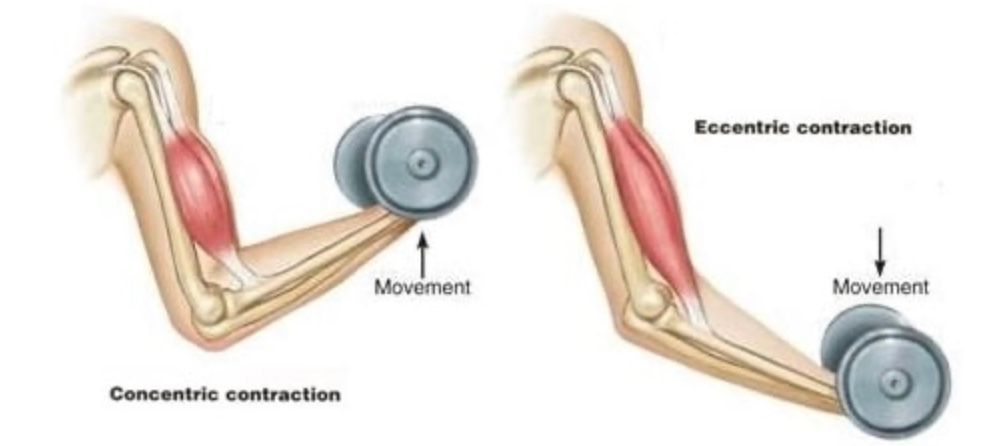
Concentric movements are when the muscle fibers shorten. Look at the above image. You curl up the weight from a straight arm position. This is concentrically contracting the biceps muscle. You can see that.
A lot of what we do in the weight room is concentric (you can think of it as output) focused. We have talked about an “output focused weight room” in prior emails and how this approach can be very flawed if it is all we focus on.
Eccentric movements are when the muscle fibers lengthen. Look at the same image. After the curl up you return the weight back down to an extended arm position. That action is the lengthening of the biceps muscle. As you return the weight there is still tension that exists on the muscle, but it is easier to handle.
You can oftentimes find that you could handle 150% of weight in the eccentric portion of a movement than the concentric portion. This should makes sense. The eccentric part of a movement is the easier portion.
After understanding those two you can probably guess what an isometric movement would look like…

Same example, the bicep curl. An isometric in that movement would be a hold without any change in muscle length. Your muscles are fighting to keep the weight in that same position while the weight and gravity are opposing that force. At some point you’ll have to succumb to the load + gravity weighing down on you.
In the isometric there is a tremendous amount of tension being recruited by the targeted musculature. This tension can exceed that of the concentric or eccentric movement. This is great to know if your goal is to get stronger!
The two types of isometrics that I love using with my athletes are stretch range isometrics and bodyweight isometrics. In today’s episode we will mainly focus on stretch range.
Stretch range isometrics are typically bodyweight movements where you are pulling yourself down into the “stretch range” position and holding for up to 5 minutes.
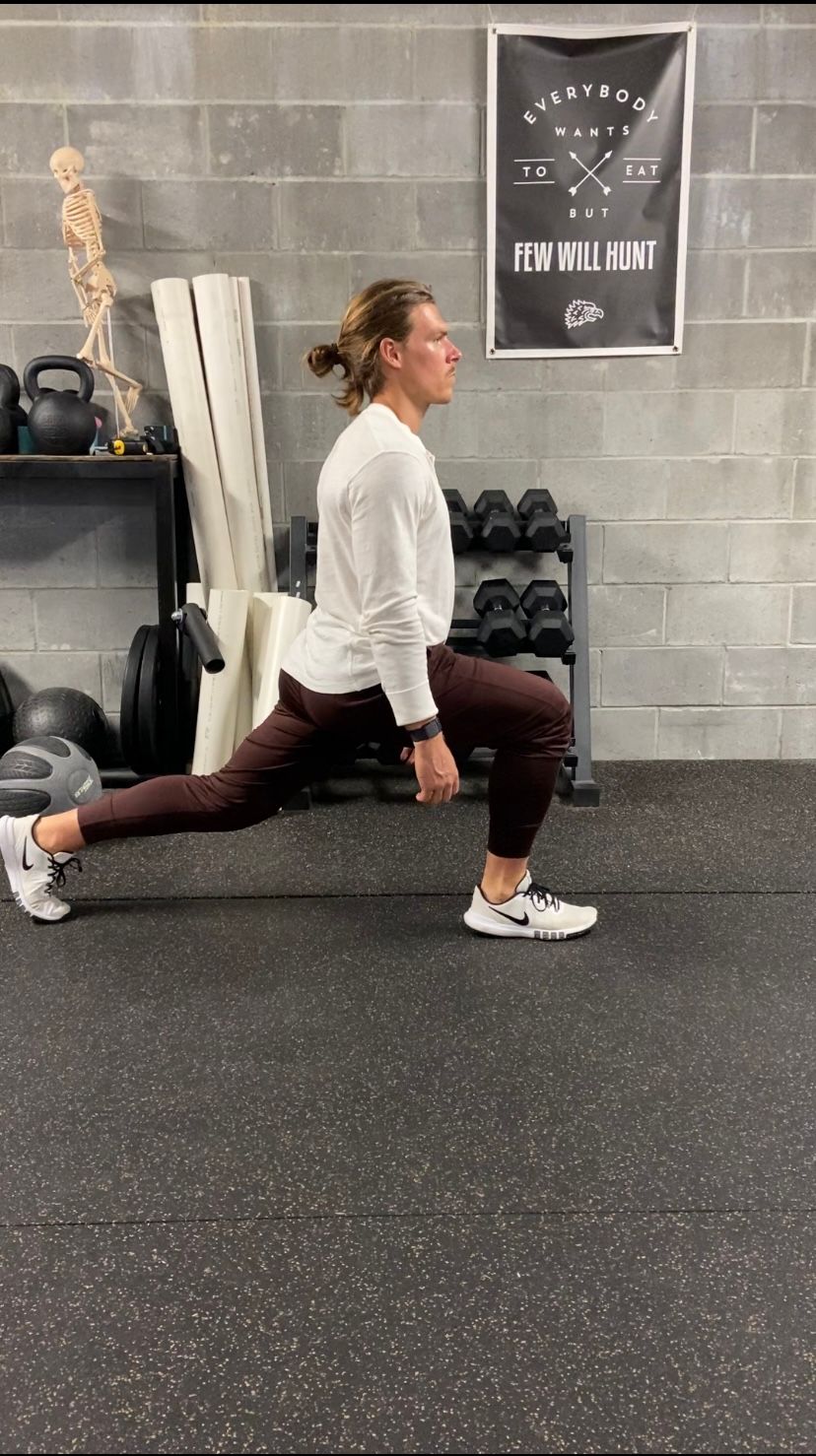
Stretch Range Isometric: Lunge Hold. I am actively pulling myself down. Front heel is pulling back and back forefoot is driving forward (even though I am not going anywhere). This is providing a max contraction
Bodyweight isometrics are holding basic bodyweight positions with good posture, but not in a generally stretch ranged position. An example of this would be a pull up dead hang
On the surface these probably seem easy, silly and questionable (I get it, I had these same thoughts), but what you need to understand is how to execute them properly.
I have seen so many athletes over the years treat the stretch range isometric as a regular isometric. There is no intentional approach to what they are doing. They are looking around the gym, putting their hands on the knees, contorting their body without any control. This is not the focus in a stretch range isometric
Stretch range isometrics are about pulling yourself into the range, controlling your breathing and owning the position.
When performing the long stretch range isometrics such as the ones shown in today’s episode you should control your breathing. I love using a box breathing approach where you are inhaling for 3-5 seconds. holding your breath for 3-5 seconds, exhaling for 3-5 seconds and then holding your breath for 3-5 seconds. This is great to not only make the time go by faster, but to practice an art of relaxation.
Here are 4 benefits that isometrics will provide:
1. Positive effect on the health of your tendons (especially when held for over 30 seconds)
2. Improves the muscular balance, neurological wiring and the proprioceptive element of your muscles (especially the stretch range isometrics)
3. Long bodyweight holds can help improve the energy system development
4. Improve joint stability and synergistic effects to the body (ex: a long dip hold can improve your bench press)
To prescribe the isometrics in training here is what I would recommend:
Low End: Accumulate 1-2 total minutes of the four exercises that you will find below at the end of the workout, taking breaks as needed
2 min lunge, 2 min pushup, 2 min push up, 2 min straight leg hold
Moderate Dose: Pick the four movements and go 10 seconds on, 10 seconds off, 20 seconds on, 10 seconds off, etc.. up to 50 seconds.
Here are 4 common Isometric Holds that I like using in training:
The Iso Cross Connect Crawl is great at connecting the facial lining that runs like an x across your body. As mentioned in prior emails, our body is not just made up of muscles pulling on bones to move us. We have this deep tissue layer, fascia, that wraps around us like Saran Wrap. This is a great one for posture too!
The Iso Lunge is a great exercise to work on loading a leg effectively. Assessing this exercise can tell you a lot about the strength and coordination that you possess. I really like using these as an assessment tool with each of my athletes.
Athletes who aren’t comfortable maintaining their knee in line with the heel and “sneak” their knee back are generally weak and dis-coordinated. You really want to pull down with the hamstring if this is you.
The Iso Straight Leg Raise should be performed barefoot without gripping the toes. This hold is training your hip flexors in a very basic manor. Our hip flexors are often neglected in training and this is a very simple way to target in connection with the foot. Training the hip flexor will also train the glute to fire on that same side properly.
I love putting these in at the tail end of speed training days!
Another great assessment tool. Great for assessing the following:
Can you retract your shoulder blades?
Avoiding “T-Bone Elbows”?
Avoiding elbows on ribs
This is great for letting the chest lengthen as you are pulling down into the stretch range. Do not collapse with these
🗣️: If you are looking to take the guesswork out of your training and have athletic goals coming up this year I’d highly recommend my online program, The Foundational Athlete (TFA). This program was built from years of experience keeping concepts like what I have shared today in mind. No matter what sport or how old you are the program holds tremendous value 🤝
RIGHT NOW TFA is being offered with a ONE WEEK FREE TRIAL. If you sign up & aren’t liking what you see just cancel it before the week is over and you won’t be billed. What’s the harm in that? To learn more you can click below! I’d love for you to be a part of the LAD Performance team & hear more about your performance goals this year.
Do you know someone else who would love this email info?
